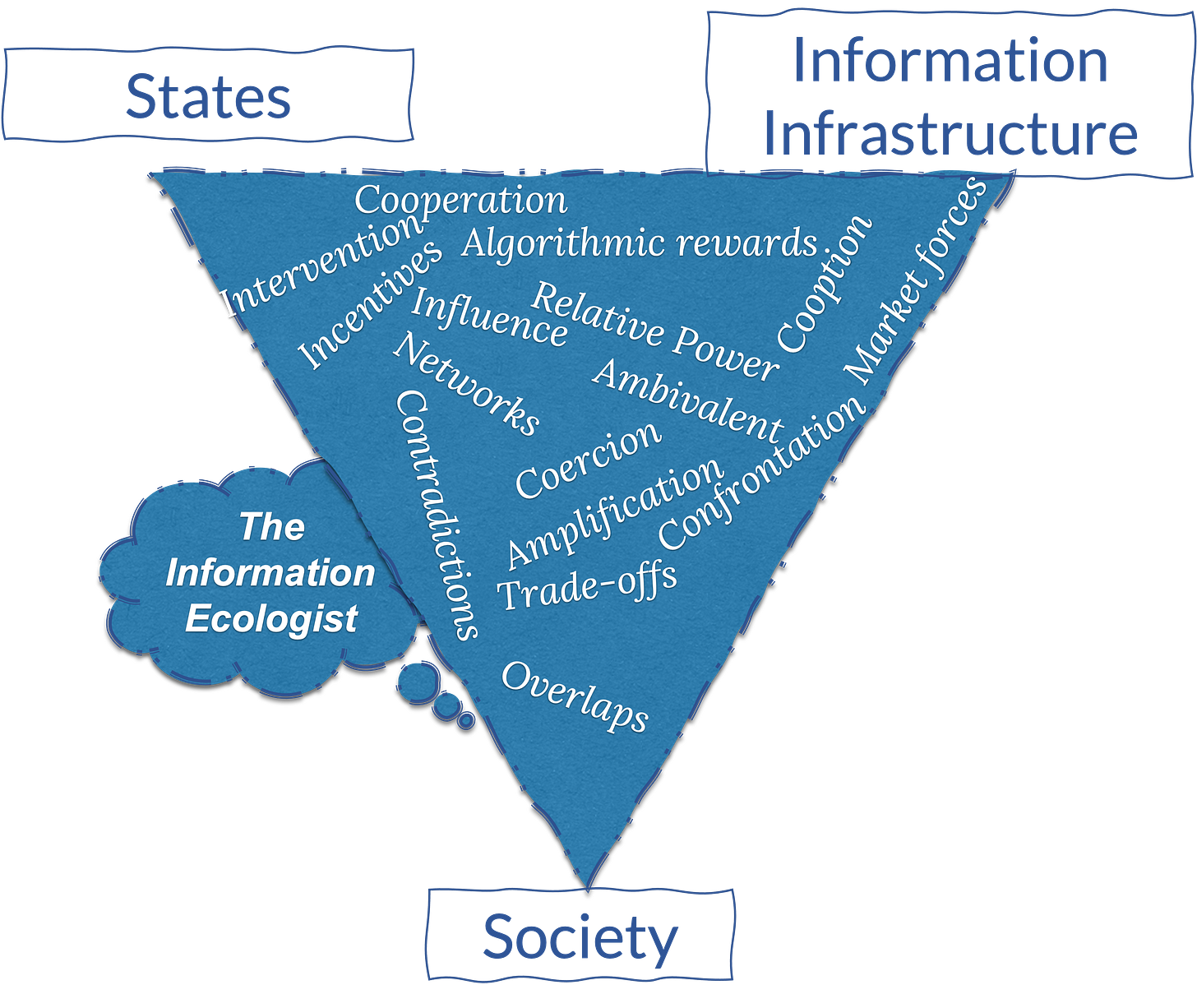Why subscribe?
Hello World! Welcome to The Information Ecologist.
For 52 editions, this publication ran under the name MisDisMal-Information - a play on the information disorder framework’s misinformation, disinformation and malinformation. 1
But after 52 editions, over 18 months, I felt it was important to shift the focus from a primarily information disorder/true-false lens to one that focused on and studied the interactions between various participants in the information ecosystem. Hence, the name - The Information Ecologist.
About that logo / image …
A minor modification of Jack Balkin’s Free Speech triangle (Balkin’s triangle depicts legacy media as part of the bottom vertex, I include it under information infrastructure2) + insight from Elettra Bietti’s insightful Free Speech is Circular post, as well as insight from many other incredibly smart people have lead me to this work-in-progress model of fuzzy interactions (which is why they are all randomly strewn about within the inverted triangle) between States/state infrastructure, information structure and societies. And while they are represented as 3 distinct vertices, each side actually contains a continuum of participants (that’s why all the lines are squiggly).3 I should also point that I came across the Information Ecosystem analogy in You Are Here by Whitney Phillips and Ryan Milner.
Yes, I know it is poorly designed. Perhaps someday, I’ll get a professional with some sense of aesthetics to actually design a logo for me. That day is not today, though.
Stay up-to-date
Subscribe to get full access and never miss an update.
You won’t have to worry about missing anything. Every new edition goes directly to your inbox.
I am leaving the first 52 editions under the MisDisMal-Information name since that's what they were published and read under.
Information Infrastructure itself lies within a broader ‘Market’ but I haven’t depicted that since the focus is primarily on the information ecosystem. Market forces, though, are in the fuzzy triangle for us to explore, when relevant.
You’ll also notice that I haven’t specifically listed individuals, communities and entities. That’s because I believe they are ‘constituent elements’ of each of the three vertices and not a distinct corners.


